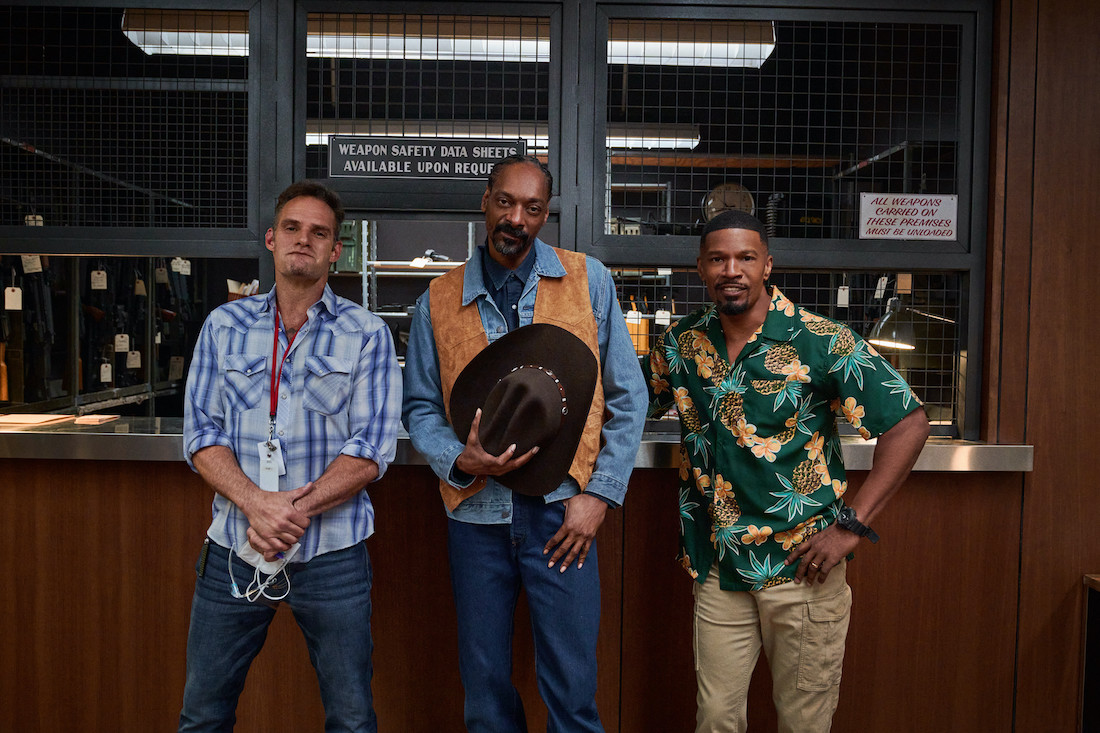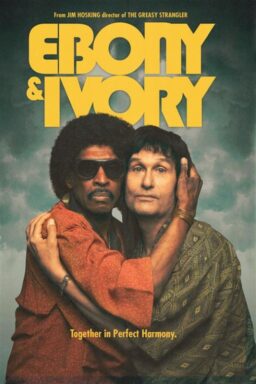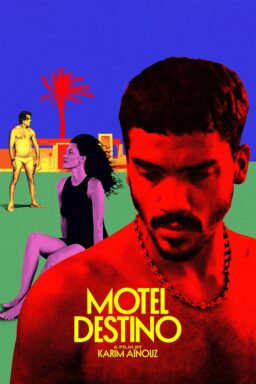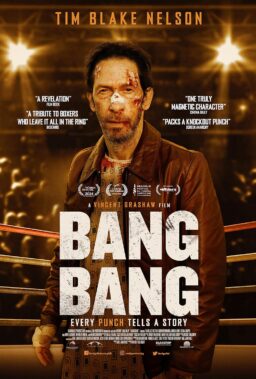J.J. Perry makes his directorial debut with the action-horror movie “Day Shift,” but if you’ve seen any good action movie in the last two decades, you’ve admired his work. In movies ranging from “F9: The Fast Saga” to “John Wick” to “Blade” to Spike Lee‘s “Oldboy” remake and beyond, Perry has worked as a stunt coordinator and later as a second unit director, creating the practical cinematic chaos that most directors often leave to the pros. Perry cut his teeth and got hurt countless times next to the likes of Chad Stahelski and David Leitch, stuntmen who have also become Hollywood directors.
“Day Shift” stars Jamie Foxx as a pool cleaner who navigates Los Angeles’ intricate, secret world of vampire-hunting, in which teeth have a bounty and anyone can be a vamp. He’s joined in the movie by the likes of Dave Franco (as his unlikely bureaucratic sidekick), Meagan Good, a vicious Karla Souza as the lead vamp who wants to control the Valley, and Snoop Dogg, who gets to wear a cowboy hat.
RogerEbert.com spoke to Perry about the making of “Day Shift,” using contortionists in fight scenes, giving Dave Franco his “stripes,” Perry’s experience working on the set of “The Scorpion King,” and more.
With all of your experience on different sets, how did that influence what you wanted to bring to an action movie or an action sequence?
You know, I did the first and second “John Wick” movies with Chad Stahelski, we started in the stunt business. I actually just did the gun fight in the nightclub in the first one, but I did the whole second movie with him. A lot of people started coming at me with scripts after that, because of Dave Leitch’s success and Chad’s success, and I’m sure they’re looking for the next action guy who can direct a movie. And I never thought I would have any of this fortune, brother. But the movies that I loved the most when I was growing up were movies like “Big Trouble in Little China,” “Lost Boys,” “Evil Dead,” and “Fright Night.” Movies that were action, comedy, and horror. Those three different ingredients.
But you know, when you work in this business—and I’ve worked all over the world, and 32 years of hundreds of episodes of TV—all that influences everything. All that you do and see in your life influence you, you can’t not be influenced by something you see or do. I have a long list of masters that I have to thank, from Ang Lee to Spike Lee to Jet Li to etc., all the things that I’ve done in the past have informed where we are today and I’m super grateful.
I know you worked second unit also, which its own underestimated part of filmmaking.
That’s right.

But what was it like filming your very own car chase scene for “Day Shift”?
For the most part, I direct those anyway. For a lot of the time, my job is to go out there and come up with a badass car chase, shoot it and cut it, and then they put the actor in a blue-screen and shoot their close-ups in the first unit. For me, it’s standard operating procedure.
What I brought to “Day Shift” is that I brought the second unit pacing, how fast we move with three cameras, we’re getting 50, 60 set-ups a day. The actors were very engaged and very into what we were doing; I was very fortunate, we had a lot of fun making it. The cast never went back to their trailers, they just hung out on set because there’s music going, taco truck etc. But it was a fast-paced scenario, and the difference in when you’re directing action and you’re directing comedy is, when you’re directing action you have to whip that horse and keep your foot on the accelerator. With comedy you can’t do that, you have to let that happen. You have to take your time; that was the learning curve for me. But having Jamie Foxx as the starting pitcher, pitching shutouts, it wasn’t like I could fail!
I noticed a lot of longer takes in “Day Shift,” or establishing shots where it would be the skyline and then the camera dropping down to the character. Is that what you’re talking about too with that second-unit pacing?
I shot the movie in 42 days with no second unit. There wasn’t a lot of time. We shot 31 days in Atlanta, and then 11 days in Los Angeles. When I was in LA, all my establishing shots had to be big drone shots because the Valley was a character, I had to film that character. That’s where that came from. And over all the years working with the different crews that I’ve worked with, I handpicked the crew, because I knew whoever I chose was going to have to be a soldier. We needed artists, but we needed artists that were soldiers, too.
How does it work with getting actors action-ready? Did you give Jamie Foxx a lot of training?
I did a movie years ago called “Warrior” with Tom Hardy and Joel Edgerton, and we had a massive boot camp for that as well. That’s kind of the standard operating procedure as well for 8711, our team. Even Keanu Reeves was three months of training for “John Wick: Parabellum,” and judo, jiu-jitsu, gun work, car work, everything. The best way to make them into a badass is to just make them into a badass.
It’s not hard with Jamie because he was a quarterback, and he’s in amazing shape. Dave Franco is a great athlete. Strangely, Snoop Dogg is a great martial artist too, he trains hard. So we had a little boot camp for everyone, we didn’t have the time to have a three-month boot camp, but we had a pretty extensive four-week program that was ongoing and fluid, where we had everyone reloading guns and practicing punches. So yeah, I had brilliant accomplices, and for the most part everybody did all their own work.
I noticed Dave Franco spinning around, and there were some shots where I was like, “That’s still him!” But that’s the rush of a good action scene, right?
Yes. He got striped up a few times, like he had more stripes on him than a tiger. He was so game-bred, I wasn’t gonna water it down.
What is “stripes” lingo for?
Oh, that he got pinched on a wire, he had little bruises. He would go for it. At the end of the night he’d show me, and he’d have four big marks on him, like “Damn!” You get your resume on your chest.
In the stunt business we say, “You get hurt or you get injured.” Hurt means you can keep working, it’s par for the course. Injured means you are not coming back to work.

The use of contortionists is great in this movie, but was it difficult to incorporate them in action scenes?
I’ll tell you, in the grandma fight there’s four performers. There’s the actress, then there’s a stunt double, then there’s a fight double, then there’s a contortion double. So there were four ladies doing that performance. And the contortion work, when we’re throwing them on the table and folding them in half, we’re not really doing that. We’re starting them in half and then pulling them out in a wire and playing it in reverse with a magic camera speed that I can’t tell you unless you give me a bunch of money.
Who came up with that, or where did that come from?
I don’t know if I invented using contortionists with reverse photography, but I may be the first one to put it in a movie and weaponize it and reaction-ize it. It kind of came to be when I was doing a movie in Hungary called “Spectral,” and I’m dyslexic, I have to see things both directions. I was editing a very flexible girl doing a reaction and I played it in reverse and she kind of folded the wrong way, and it looked better in reverse than it does in forward. And then I said, “If I had a contortionist …” and I pitched that to every director I’ve worked with since 2013, and no one wanted to do it. They’re like, “I don’t get it, doesn’t make sense!” So I’m grateful that nobody else wanted to do it and it ended up in “Day Shift.”
What are the tenets to you, as a viewer and someone in the business, of a good fight scene?
There’s a lot of versions of that, but I’ll tell you what is most interesting is when you create a problem for your protagonist, and you show how they solve that problem. Like Jackie Chan is one of the masters. For starters, he’s a stuntman, who became a movie star, in order to become a director. But his style of storytelling in the action is what really inspired my Gen-X generation of action filmmakers. I know that Chad, and Dave, and I and a lot of the others that came up with us, that’s what we were watching. “Armor of God,” “Meals on Wheels,” “Project A.” As well as John Woo, but Chan … Bruce Lee started the wave, but Chan refined the wave.
You were studying these movies as you were building your career?
Absolutely. What we used to do is we’d go out and recreate one of the fight scenes and shoot it, and then before editing was a consumer product, we would do it from VHS deck to VHS deck when we would cut it. As soon as Final Cut Pro came out, it turned us into action directors because when you know how to edit, that informs what you need to shoot, and if you’re paying attention with lenses and angles, it’s like a game of pool. You can’t just take every shot, you have to think what’s your shot, and your next two leads. It’s strategy.

What’s your history with Chad and David?
There were a bunch of us back then, and before it was 8711 we used to be called Smashguts. This was back in the ‘90s when we were budding stunt men, and I never thought I’d be a stunt coordinator or second unit director, I was just stoked to be a stunt man. I didn’t want to have to go back in the army, I was just happy to do this. But I watched their trajectory, they’re my friends, being a part of that and helping them on the way up was super fulfilling to me. But it also let me know that I could do it too.
How long has the director bug been biting you?
I was super stoked doing what I was doing, second unit and stunt coordinating. You go all over the world with your friends and smash stuff up and then you get on a plane and go somewhere and do it again, making a ton of dough. So stepping out of that line to be a director I take a big hit financially, and I have a family, I’m 53, it’s scary. That’s why “Day Shift” really spoke to me. Otherwise I’d be one second unit somewhere, crashing cars right now. I have a team in LA that’s getting ready to jump a car in 10 minutes, they’ve been blowing me up like, “How much air pressure? How much PSI in the tires?” Too late, buddy. Just put your foot in it and say a Hail Mary.
I gotta say that it’s a single shot, but I can’t recall seeing a drone shot of a car as it is being launched in the air. What’s behind that shot?
So just in general with car chases, in the last three years since this FPV drone technology, we’ve been watching car chases from very similar perspectives. The Russian arm, which is a pursuit vehicle or a high-speed vehicle that has a crane arm with a camera and a motor in the end, or a motorcycle, an e-bike with a camera mounted on the front with a stabilizer, or a helicopter, or mounted shots. But for the most part, we haven’t seen different coverage since then, since the invention of the Russian arm. Now that the FPV drone is here, it gives you another take on it. There’s another shot in the movie, where you’re in the car in the backseat behind two guys and we threw the drone out of the sunroof. It’s an impossible shot. Five years ago, people would have saw that, their heads would have exploded.
If I can get another crack at a vehicle chase, I can reinvent car work. Maybe not reinvent it, but I would go one step beyond my next time. I just got to R&D on my movie, now we’re gonna take it to the next place.

Does working in a car chase take up a lot of time within those days?
We had five days for the chase. I had 11 days total in LA, and I had five days for the chase. I almost got kicked out of every location; it’s not easy to film in LA. I really got to pimp the alley out in that chase. We got down into the Culverts, because “T2: Judgment Day” is one of my all-times. So I had to pay homage and tip the hat, so yeah it was five days and it was worth it. And truth be told, the chase is quite a bit longer, I have a seven-and-a-half-minute version of that that maybe I’ll show you one day.
I did two “Fast & Furious” movies, so I love car chases. Fighting is fun and cool, but when you get to lock a city up somewhere, like Edinburgh, Scotland, or Havana, Cuba, or London or New York, it’s much fun to just shred and wreck cars, going 90 miles an hour. The smell of the brake dust and the gas, the burning rubber. I’m getting goosebumps.
Among your many credits, I noticed you were part of the crew that worked on “The Scorpion King,” which is getting a re-appreciation thanks to Jordan Peele’s “Nope.” What do you remember from the making of that movie?
So we did the reshoots, they reshot the whole beginning of the movie when he walks into that tavern. This was the first time I met Dwayne Johnson and I became dear friends with his stunt double, Tanoai Reed. We went and did “The Rundown” after that, with Seann William Scott, fell down a mountain. Did a bunch of movies with those brothers.
But from “The Scorpion King,” I was one of those guys who was throwing a hatchet at him, and he jumps up, grabs me with a rope, and jumps down with me. We did this big descender from the ceiling. And I remember it was Tanoai Reed’s first time doing a descender. And Tanoai is 300 pounds, and we’re on the very top, 60, 70 feet up. He’s got a hold of my arms, and I’m wrapped up in the rope, and he’s gripped up like an alligator. You can tell he was nervous; it’s scary if you haven’t done that before, because it stops you right before you hit the ground. It’s super fast but you have to trust the gear. And I’m like, “Bubba, it’s gonna work, we ain’t gonna die. We’re gonna die, but not today.”
“Day Shift” will be available on Netflix on August 12.












